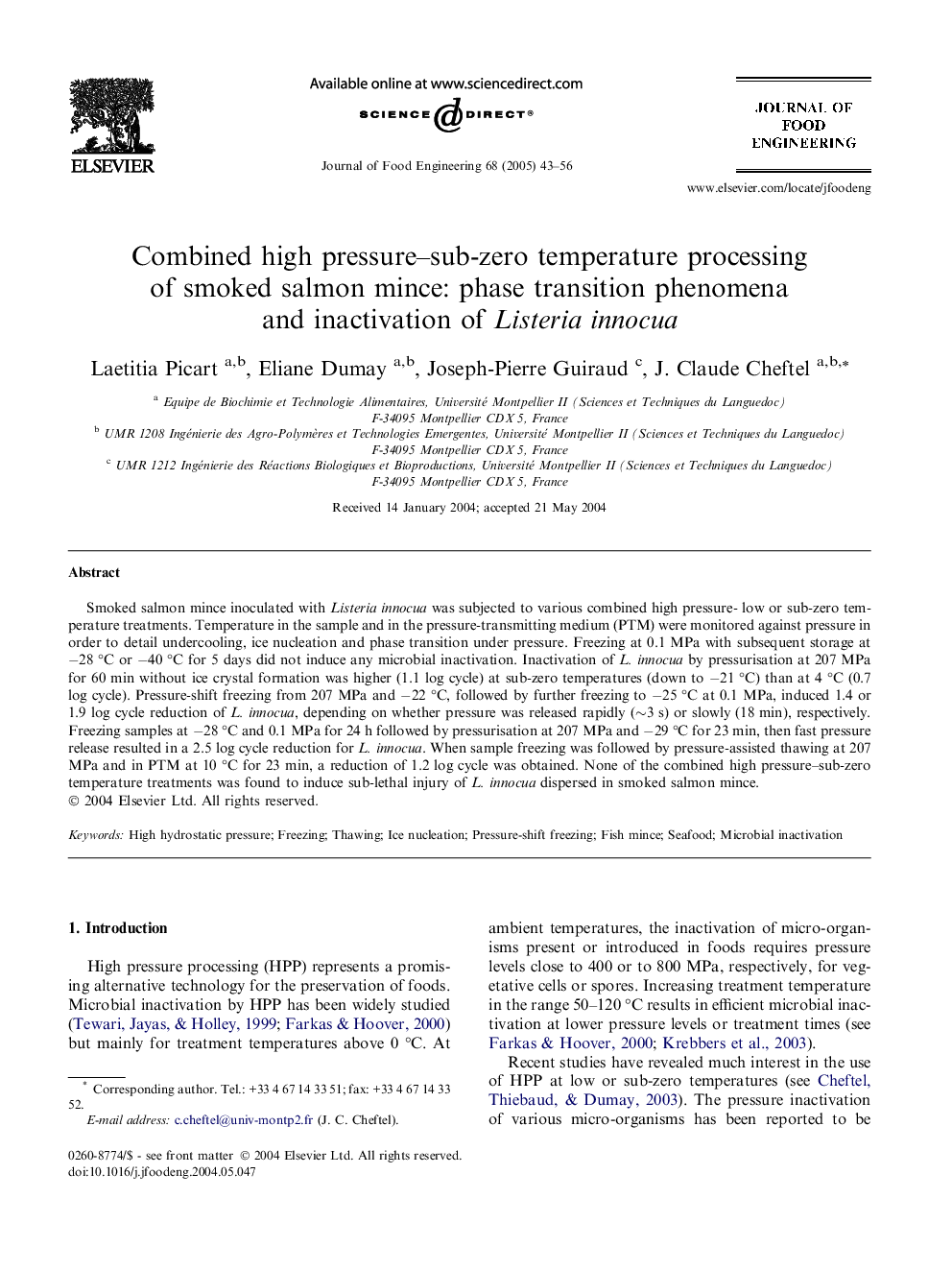| Article ID | Journal | Published Year | Pages | File Type |
|---|---|---|---|---|
| 10278168 | Journal of Food Engineering | 2005 | 14 Pages |
Abstract
Smoked salmon mince inoculated with Listeria innocua was subjected to various combined high pressure- low or sub-zero temperature treatments. Temperature in the sample and in the pressure-transmitting medium (PTM) were monitored against pressure in order to detail undercooling, ice nucleation and phase transition under pressure. Freezing at 0.1 MPa with subsequent storage at â28 °C or â40 °C for 5 days did not induce any microbial inactivation. Inactivation of L. innocua by pressurisation at 207 MPa for 60 min without ice crystal formation was higher (1.1 log cycle) at sub-zero temperatures (down to â21 °C) than at 4 °C (0.7 log cycle). Pressure-shift freezing from 207 MPa and â22 °C, followed by further freezing to â25 °C at 0.1 MPa, induced 1.4 or 1.9 log cycle reduction of L. innocua, depending on whether pressure was released rapidly (â¼3 s) or slowly (18 min), respectively. Freezing samples at â28 °C and 0.1 MPa for 24 h followed by pressurisation at 207 MPa and â29 °C for 23 min, then fast pressure release resulted in a 2.5 log cycle reduction for L. innocua. When sample freezing was followed by pressure-assisted thawing at 207 MPa and in PTM at 10 °C for 23 min, a reduction of 1.2 log cycle was obtained. None of the combined high pressure-sub-zero temperature treatments was found to induce sub-lethal injury of L. innocua dispersed in smoked salmon mince.
Keywords
Related Topics
Physical Sciences and Engineering
Chemical Engineering
Chemical Engineering (General)
Authors
Laetitia Picart, Eliane Dumay, Joseph-Pierre Guiraud, Claude Cheftel,
